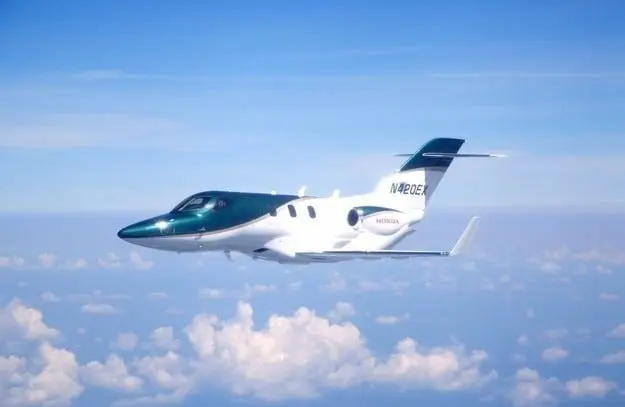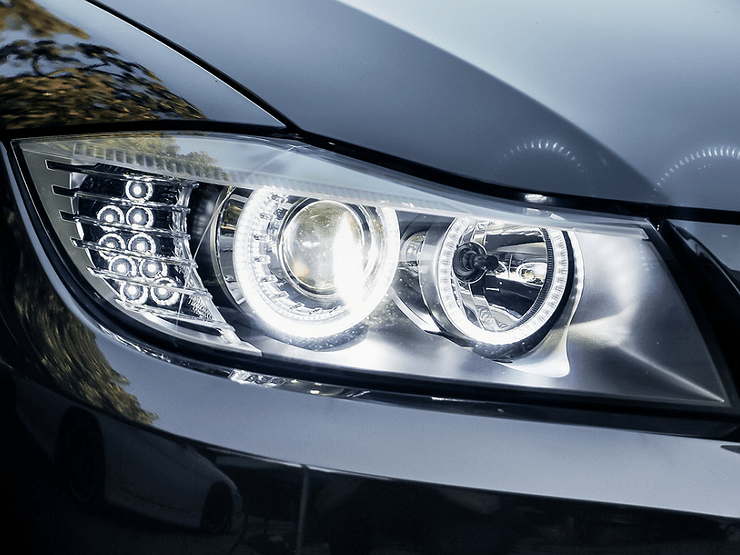
Honda is already making planes

After almost a decade of development, Honda's desire to conquer heights is already a fact. The company's first production aircraft, called the Honda Jet, made a test flight over its US headquarters near Greensboro. Detailed information about the fastest and most economical ultralight class in this area.
The first production aircraft Honda has already made its first flight. Within its framework, the business jet climbed to an altitude of 4700 m and reached a speed of 643 km / h. During the tests, the pilots checked the operation of the onboard electrical equipment, controls and the braking system. According to the manufacturer, it will be the fastest economical business jet in its class. This is the main message of the company, but at first glance, we will look behind the scenes.
July 25, 2006 Japanese company responsible factors Honda we announce the start of large-scale marketing and technology cooperation at American Aviation Corporation PiperAircraft... For many, the car company's entry into the aviation business seems too optimistic, but Honda whose aspiration was already directed to heavenly heights, was never a supporter of conventional thinking. “Aviation has been a constant dream of our company for 40 years,” they say. HondaengineCo.
But what would the dreams be if they did not make you want to realize them. Thus, more than two decades in HondaWe are working hard in this direction, and since the company already has a serious image of an innovator, it cannot afford to create an aircraft that does not live up to this and the role - the goal is to be the fastest, lightest and most economical in its class. .
The result of development and design is already a fact and is called HondaJet is an ultra-light, high-performance business jet with a revolutionary layout and extremely functional space distribution. With many patented innovations HondaJet30-35% more economical than comparable ultralight aircraft, has a speed of 420 knots, has a range of 2600 km at an altitude of 9200 meters and the ability to fly 13 meters at a cabin pressure equivalent to 000 meters. Each of the two turbojets HondaHF118 built in conjunction with Commonelectriccreates a static thrust of 8 kN during takeoff. Slightly less than CessnaCJ1+ HondaJetThe cabin is 30% larger, the cruising speed is 10% higher, the mileage is 40% more, and the emissions are the lowest in its class.
Avant-garde solutions for aircraft construction
In fact, behind these simple yet eloquent numbers lies a huge amount of research and development work to create a highly efficient mockup. Innovative reading of the laws of aerodynamics by the team of the creator HondaJetMishimasa Fujino pushes him to look for answers that go beyond the usual, and generates ideas that are not found in the traditional aviation industry. Among them are the nose and wings of a special shape, due to which a laminar air flow (consisting of parallel layers without turbulence) is created, which reduces the overall air resistance. For this purpose, a special integrated coating is used on the thin aluminum fenders with an extremely smooth surface and high strength. To further reduce weight, the fuselage is completely made of composite materials, therefore it is 15% lighter than an aluminum equivalent and is a complex of specially created Honda technological solutions that provide more interior space. The patented design for mounting the pylon engines on the wings helps to optimize the latter - an almost impossible solution in its complexity required engineers three years to create adequate structures from an aerodynamic point of view that could withstand their weight, vibration and thrust. However, the effort is worth it, especially in this segment where every cubic centimeter of space counts - it avoids the need for a structure to mount the engines to the fuselage, taking up valuable passenger space and reducing air resistance. Initially a surprising shape of the front end, but it fully meets the requirements for maximum efficient aerodynamic flow, and its drag is 10% lower than standard solutions in this segment. It resembles a wasp and then flows elegantly into the rest of the fuselage. The process of optimizing aerodynamics has been transferred to convex glazing, which provides excellent visibility for the crew and is competently painted over with the two-tone color scheme of the aircraft.
Thanks to the export engines, the contour of the cabin is free from curves and bends, which gives more opportunities for seating arrangement. HondaJet decorated in the best traditions of the company using high quality, warm and aesthetic materials, and thanks to the high-tech lowered suspension, it is easier for passengers to get out.
The passion for aviation flares up HondaJetto the heights, but this aircraft has a solid business base as it targets the fast growing ultralight aircraft segment, although in practice this is a good compromise between them and the next class.
Main Market Honda jet will become the United States. The aircraft has not yet passed government certification, but Honda production has already begun to meet consumer demand when it is time to start official sales. The unit itself Honda jet was established in 2006 specifically for the development and production Honfa Jet. The aircraft created by the company is the first in Japan to be completely produced by the company without government support.
Text: Georgy Kolev
HA -420 HondaJet
Crew2
Passengers5 (6)
Length12,71 m
Wingspan12,5 m
Height 4,03 m
Maximum takeoff weight 560 kg
Engines2хGEHondaHF120 turbofanwith thrust 8,04 kN
Max speed 420 knots / 778 km / h
Cruising speed420 knots
Max. Flight length2593 km
Flight ceiling13 m
Climbing speed 20,27 m / s
ManufacturerHonda Aircraft Company
Cost about $ 4 million
